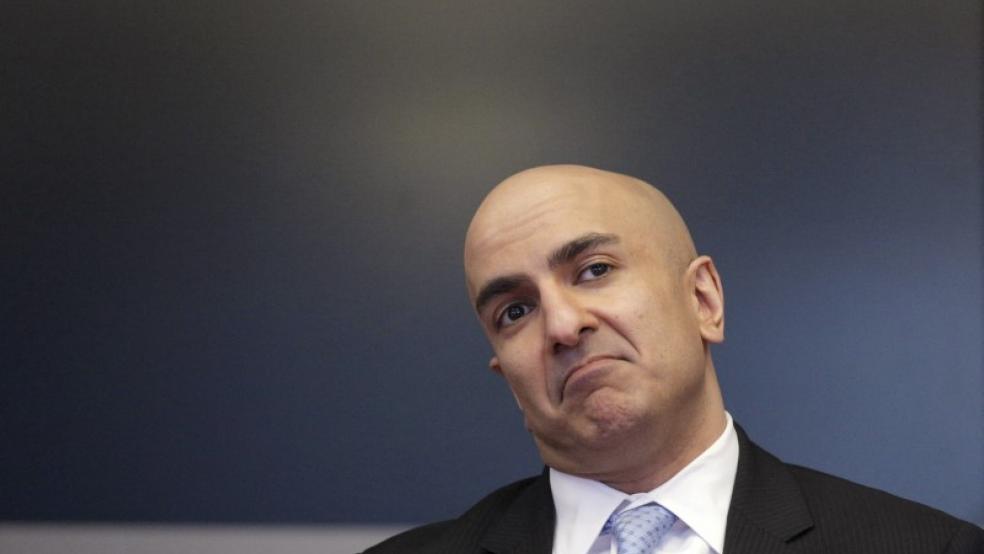WASHINGTON (Reuters) - Most Federal Reserve policymakers expect the U.S. jobless rate will stop plunging and stabilize right around its long-term normal level, a risky forecast given that this apparently hasn't happened in at least a half century.
Across decades of economic records as the economy healed after recessions, the rate dipped well below what analysts consider normal, the so-called "natural rate" of unemployment.After the 2001 recession unemployment spiked to 6.3 percent in 2003 and then turned downward. By mid 2005 it was around its long-run normal rate, estimated at the time to be 5 percent or a little higher. It kept dropping and by December 2006 had hit 4.4 percent.Fed policymakers are betting history will unfold differently this time. If they get their call wrong and unemployment keeps falling sharply in coming months, they could face pressure to hike interest rates more aggressively than they would like, delivering a potential shock to the economy and financial markets."They're taking some big risks," said Jesse Edgerton, a former Fed economist now at JPMorgan, one of several big banks that see the jobless rate dropping more than the Fed expects. The Fed's outlook will be put to the test by government employment data for July due on Friday and by subsequent job reports over the next year.The potential for a misstep hinges on the natural unemployment rate, which is an estimate of the Goldilocks level at which the labor market is neither overheating nor underperforming.The long-run normal rate cannot be measured directly and economists can only estimate its level, which they presume shifts over time. Across six decades of economic expansions, the jobless rate regularly drove past leading historical estimates of the natural rate calculated by the Congressional Budget Office.It's unclear why most Fed policymakers expect this time it will flatten abruptly and hover close to the natural rate, a path evident in details of their forecasts made in June and released on July 8.One possible reason rests on the Fed's expectation of faster productivity growth after years of sluggishness. More productive workers help businesses meet rising demand without hiring more people and could slow the fall in the jobless rate. Another possibility draws from the Fed's belief that a stronger economy will lead discouraged, jobless Americans to rekindle job searches. Because they didn't technically count as unemployed when not hunting, getting back in the game puts upward pressure on the jobless rate.Also, economic forecasting is particularly difficult when the economy appears to be near a Goldilocks state of not-too-hot and not-too-cold. Analysts assume indicators like economic output and hiring will move toward long-term averages. As that long-run normal approaches, their forecasts flatten out."It's your best guess of what the steady state would be from here if no other big shocks occur," said John Weinberg, an economist at the Richmond Fed. The jobless rate has fallen about a percentage point a year since late 2009, dropping to 5.3 percent in June.That is a tenth of a point below the CBO's current estimated natural rate and slightly higher than the 5.0-5.1 percent range estimated by most Fed policymakers, who started publishing their own views of the natural rate in 2009. Thirteen of the central bank's 17 policymakers forecast in June the jobless rate would stabilize at between 5 and 5.3 percent by the end of next year, and eleven saw it in that range at the end of 2017.A sudden stabilization like that right around the Goldilocks jobless rate is something "that's never actually ever happened," said Edgerton. JPMorgan sees the jobless rate falling to 4.5 percent by the end of 2016.Most forecasters surveyed by Reuters see the jobless rate falling to at least 4.8 percent by then. Some see a deeper decline. Royal Bank of Canada forecasts 4.1 percent and Deutsche Bank expects 4.5 percent. Neither the Fed nor private economists have done well in forecasting unemployment and few expected it to fall so steeply in recent years. Nor have Fed economists gotten the call right in the past. In August 2005 after the jobless rate was right around the CBO's estimated natural rate, staff economists at the Fed's central board predicted it would hold steady at 5.0 percent to the end of 2006. Instead, it kept falling. (Reporting by Jason Lange in Washington; Editing by Andrew Hay)Fed's forecasts for jobless rate look out of step with history

Kevin Lamarque



